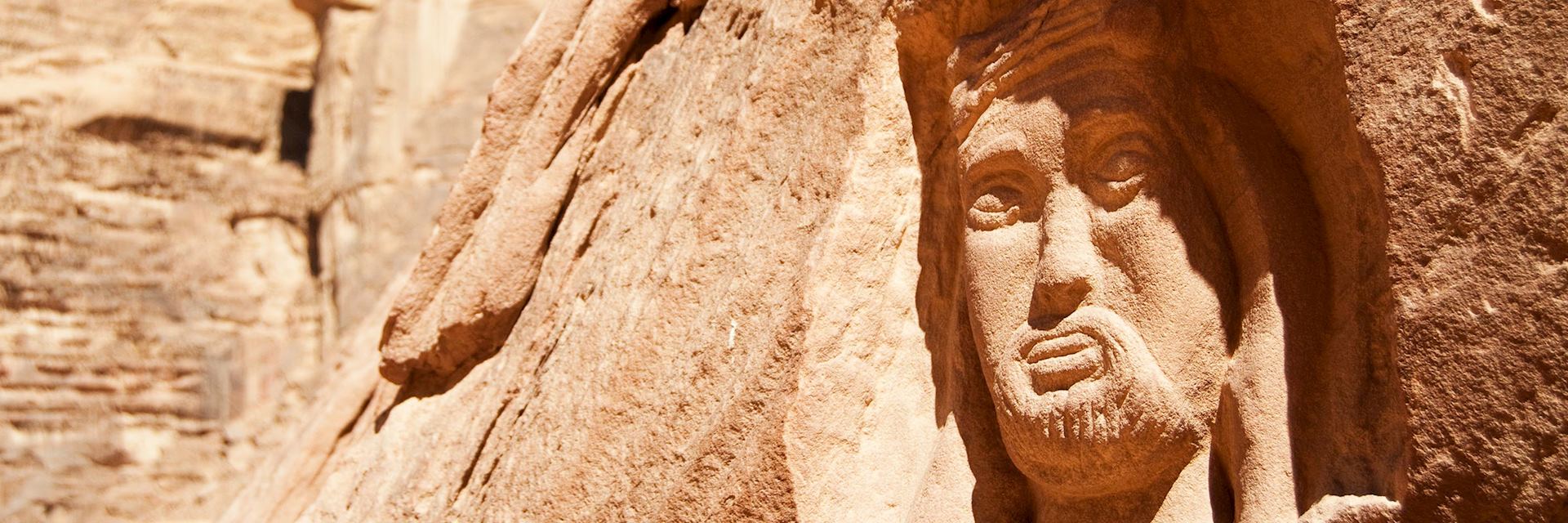This year’s Oscar season is upon us. To celebrate, we’ve picked out places around the world that have appeared in or inspired gong-winning (or nominated) films of the past.
You can visit them as part of a wider trip. Perhaps you’d like to try Bollywood dancing at the train station in Mumbai where the cast of Slumdog Millionaire performed their finale. Take a classic convertible tour of LA to see film sites you’d otherwise miss. Or go quad-biking among the Namib Desert’s dunes, Mad Max-style.
Wadi Rum, Jordan
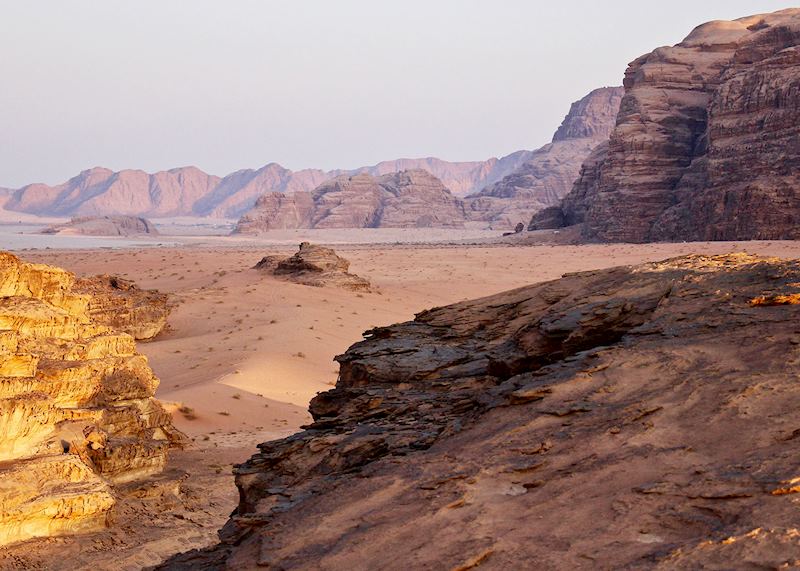
Location for: Lawrence of Arabia (winner of seven Oscars in 1963)
An immense desert of rust-red sand and wind-carved stone, Jordan’s Wadi Rum is visually arresting, even otherworldly. It’s no wonder that dozens of movies have been shot here, including The Martian, Prometheus and Disney’s upcoming Aladdin.
However, the first movie filmed there was Lawrence of Arabia. The 1962 classic won cinematographer Frederick A. Young an Oscar for his ground-breaking work capturing the desert’s harsh grandeur, which Lawrence himself described as ‘vast, echoing and God-like’.
Deep in the heart of this raw landscape, the Memories Aicha Luxury Camp is a small oasis of indulgence. The main tents are decorated with traditional Bedouin details, with richly patterned fabrics draping the walls and tasselled footstools. The camp’s bubble tents are less lavish, but their transparent roofs offer peerless views of the night sky.
But the real reason to visit the camp is the surrounding landscape. The sands here are deep red and barren, with jagged stone outcrops erupting from the windswept grounds. Take a Jeep safari through the dunes or mount a camel for a ride across the shifting sands. Or, you can climb up one of the many dunes to watch the sunset, when thin veils of sand unfurl in the breeze, turning lavender, maroon and burnt umber in the fading light.
Los Angeles, California, USA
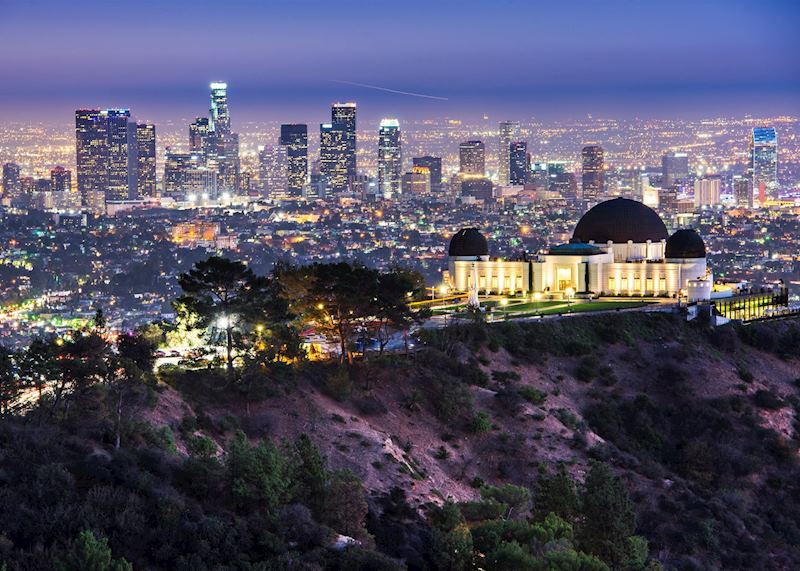
Location for: La La Land (winner of five Oscars in 2017), Back to the Future Part II (nominated for one Oscar in 1989), The Graduate (winner of one Oscar in 1968), Pretty Woman (nominated for one Oscar in 1991)
There’s no question that Los Angeles and the film world go hand-in-hand. Visit the city as part of a California self-drive trip and explore beyond its movie-studio sets to find buildings, parks and viewpoints that appear in many popular films.
You can take a two-and-a-half-hour hike in the Hollywood Hills with a local guide, who’ll tell you about the history of Hollywood as you walk.
After taking in views over the ‘city of stars’ from the top of Mount Hollywood, you can visit the Griffith Observatory, a filming location for 2016’s La La Land. It was here, in the planetarium, that Mia and Sebastian waltzed together, floating among the projected constellations.
The hike begins in Griffith Park, where you’ll see the Observatory Tunnel. It appeared in Back to the Future Part II, where Marty uses his hoverboard to out-run Biff (the tunnel was made to look much longer in the film). A good way to see other hidden filming locations is by touring LA in a classic convertible. You’ll be driven by a local guide who can plan a route according to your interests.
You could pause to see the church from The Graduate where Benjamin bangs on the window to halt Elaine’s wedding. Or, stop outside the shop on Beverly Hills’ Rodeo Drive where, in Pretty Woman, Vivian is snubbed by sales assistants. Big mistake. Big. Huge.
You can also stay in the Four Seasons Beverly Wilshire — the very hotel where Vivian and Edward fall for each other and she learns how to behave like a ‘lady’.
Oaxaca, Mexico
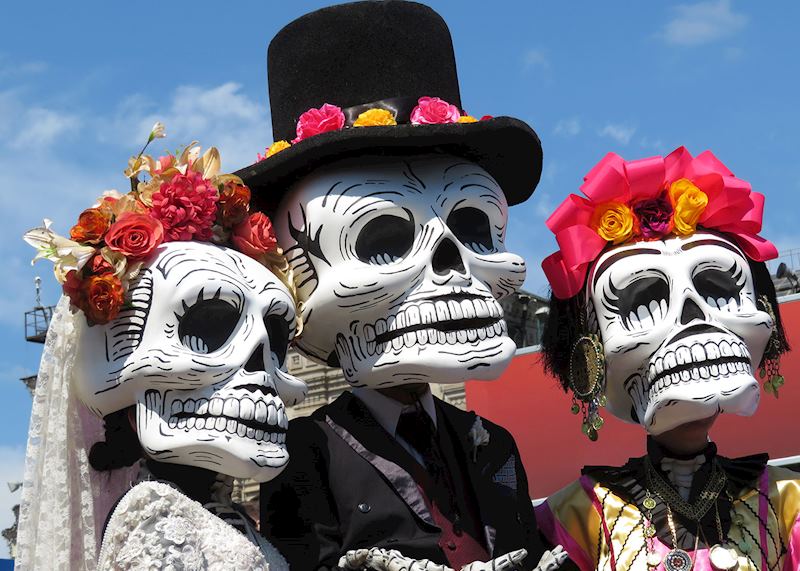
Location for: Coco (winner of one Oscar in 2018)
Pixar’s animated spectacular won praise for the vivid and faithful way it depicted Mexico’s Day of the Dead. The story of a child, Miguel, who finds himself magically transported to the Land of the Dead, it’s a joyous evocation of how Mexico commemorates deceased family members. And, if you head to Mexico during the Day of the Dead (31st October to 2nd November, annually), you’ll witness scenes that seem lifted straight from the film.
While Mexico City does host traffic-free parades, they’re a recent phenomenon, only introduced after they formed the opening to James Bond’s 2015 outing, Spectre. Far better to go to Oaxaca (and this ‘Mexico: from city to sea’ trip suggestion gives you an idea of how the city can be woven into a visit). Here, the festivities are much more authentic.
Streets are strung with candles and paper streamers, and roving mariachi bands strike up tunes. Some women dress as ‘La Catrina’ — a typically gangly female skeleton topped with a feathered hat (her headgear’s a slight mocking dig at European aristocrats, and you’ll see her likeness throughout Coco). Vendors ply you with sugar skulls, sweet bread with sesame, and pumpkin glazed in cinnamon.
As in Coco, cemeteries are the focus of family celebrations, and you could ask your guide to take you on a walk through one. During the day, families scrub and polish their relatives’ tombs before decorating them with marigolds, pumpkins, loquats, candles, food, and photos of their ancestors. Come nightfall, families gather by tombs to share stories, feast, sing, drink (usually tequila, beer or hot chocolate) and remember.
Namib Desert, Namibia
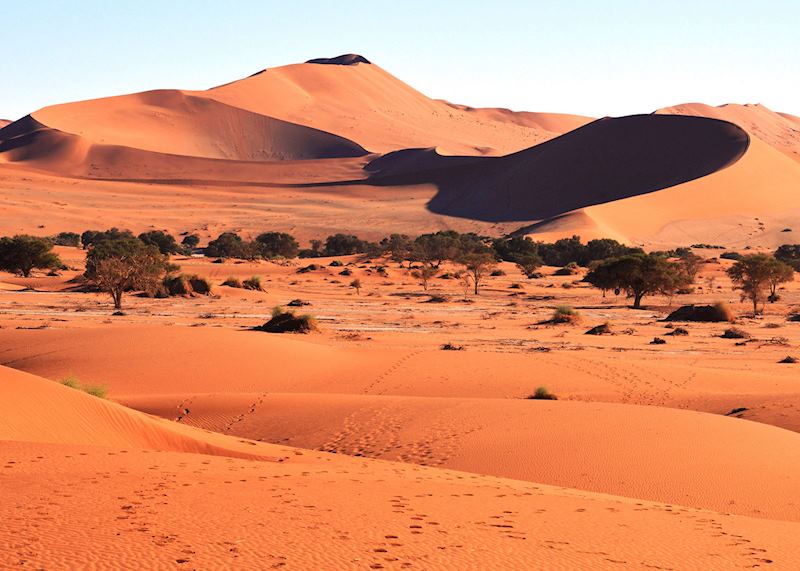
Location for: Mad Max: Fury Road (winner of six Oscars in 2016)
When watching the tense, bass-heavy car chases in Mad Max: Fury Road, you can almost feel the searing heat and dry air of post-apocalyptic Australia.
But, while filming was always planned to take place in an area of the Australian Outback (the same backdrop featured in the first three Mad Max movies), unexpected rainfall turned the usually arid landscape green.
Step forward, Namibia.
The rusty sands and towering dunes of the Namib Desert provided the ideal stand-in for Mad Max’s dystopian world. Most of the film was shot near the coastal city of Swakopmund, which you can visit on a self-drive trip around Namibia.
The film’s steampunk-nightmare vehicles roar and belch along the area’s desert tracks, leaving dense clouds of dust in their wake. There are also moments of calm, when characters stand in contemplation atop untouched, burnt-orange dunes, contrasted with an azure, cloudless sky. It’s these moments that reveal Namibia’s natural beauty at its best.
You can get your own adrenaline fix while exploring the sun-baked desert on a quad-biking tour. Led by a guide, you weave through smaller dunes before revving up to the top of higher ones, pausing to take in the sands rolling out to the ocean.
Alternatively, go sandboarding down the dunes’ gentle, wind-sculpted slopes. Begin on your belly before graduating to a standing position — the soft sand will break any tumbles.
Phnom Penh, Cambodia
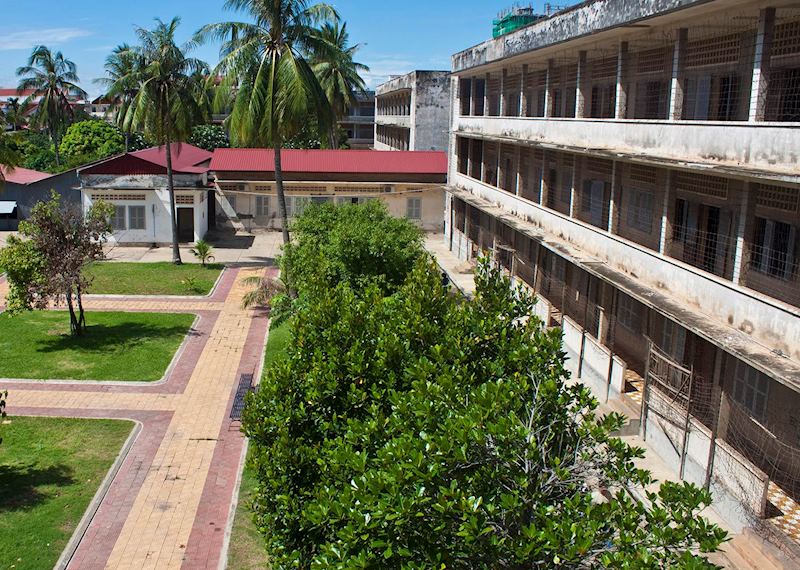
Location for: The Missing Picture (nominated for Best Foreign Language Film in 2014)
Director Rithy Panh, whose family perished in the work camps of the Khmer Rouge, attempts to reclaim his memories in this documentary film. Dioramic scenes of clay figurines are combined with vintage propaganda footage to document the atrocities of the period, beginning with the invasion of Phnom Penh on 17th April, 1975.
Remnants of atrocities pictured in the film still exist across the city. The former high school of Tuol Sleng, known as S-21, was commandeered by Pol Pot’s security forces and turned into a prison. The Khmer Rouge were meticulous record keepers, photographing each prisoner. A selection of these black-and-white portraits are on display in the old cells.
Combine a visit to Tuol Sleng with the Killing Fields of Choeung Ek. Once an orchard, this death camp witnessed the killing of thousands of prisoners from S-21, who were piled into 129 mass graves here. The site is now a peaceful memorial, best interpreted with the audio tour provided on entry. It’s a sobering visit, but a good grounding in Cambodian history as part of a tour across the country.
Many of the empty, abandoned streets in the film still exist in Phenom Penh, but they have been reclaimed by a modern, prospering city. You can take tours run by local residents, showing you around the city’s architectural highlights or sampling the finest of the burgeoning craft brewery scene. The best view of the city is from Sora, a gleaming sky bar that protrudes from the newly built Vattanac Capital Tower.
Rome, Italy
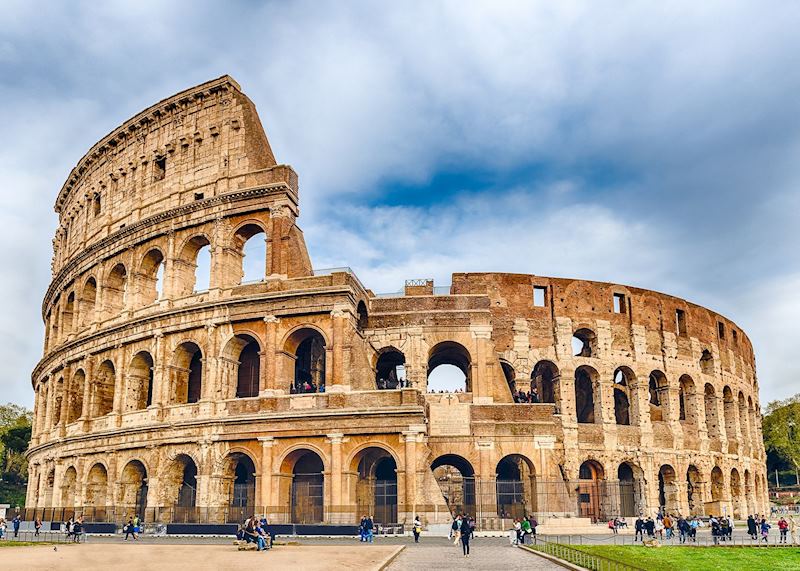
Location for: The Talented Mr Ripley (nominated for five Oscars in 2000)
Shot in a golden, mid-century style, Italy is the seductive setting for The Talented Mr Ripley. The taut, stylish thriller was shot on location across the country, including many scenes in Rome. Though we hope your trip has a happier ending, you can emulate the character’s travels through Rome by tooling around the city’s narrow streets and quiet districts on a vintage Vespa.
The nimble scooter provides a good way to manage the city’s ancient streets, which were laid out long before engineers had to consider cars. Your experienced driver-guide will navigate and narrate your trip, which will include showstopper sights like the Colosseum and Forum, where Tom spends some time contemplating his next move. You’ll also visit lesser-known sites, like the Roman Spa.
The tour is flexible, but we suggest taking a spin through Trastevere, an artsy area where the narrow streets are packed with cool cafés and jazz clubs, like the one where Dickie and Tom sing Tu Vuo’ Fa L’Americano. And, on Gianicolo Hill, you can enjoy cinematic panoramas over the city.
Tobago Cays, St Vincent and the Grenadines
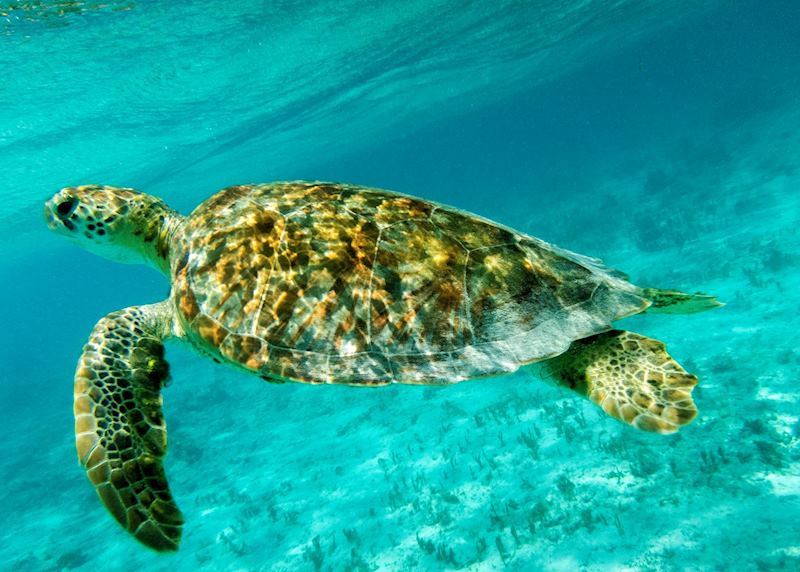
Location for: Pirates of the Caribbean film series (winner of one Oscar in 2007)
The Pirates of the Caribbean franchise may have won an Oscar for best visual effects, but there were no illusions necessary when filming on Petit Tabac. Part of Tobago Cays archipelago in St Vincent and the Grenadines, the island put in a quality performance as Rum Runner’s Isle, where Jack Sparrow was marooned (twice).
On screen, Jonny Depp and Keira Knightly swig rum and dance by firelight, though, unfortunately, the island doesn’t actually have a secret rum stash. Instead, its main appeal is the surrounding waters of Tobago Cays Marine Park.
Don a snorkel you’ll find a network of coral gardens. Fingers of stony coral, delicate sea fans and tendrils of table coral (which look like miniature trees) form clusters, sheltering colonies of sponges and a confetti of tiny fish. In-between the reefs, you’ll find seagrass meadows where you’re almost guaranteed to see green turtles feed.
The best way to visit is on a boat trip from one of the surrounding islands — you’ll need to sail across the archipelago for the best snorkelling spots.
Barring a few residential villas, Palm Island is a private-island resort to the south, with a selection of rooms and beach-front cottages scattered among its tropical greenery. You can choose between sailing on a hand-crafted schooner or a more modern catamaran. Or, if you’re going all out, there’s Petit St Vincent, an understatedly refined private island a 25-minuite boat ride from the cays.
Mumbai, India
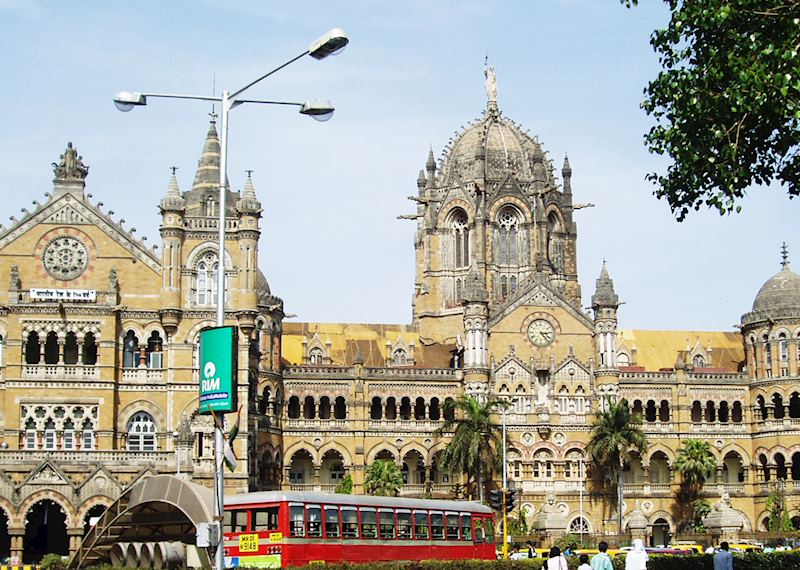
Location for: Slumdog Millionaire (winner of eight Oscars in 2009)
One of Slumdog’s many Oscars was Best Song, won for Jai Ho, a tune which fuses the pulsing Bhangra of 80s Bollywood with contemporary flair. The climax of the film is the cast dancing, Bollywood-style, to the song on the platform of Victoria Terminus in Mumbai.
Take a luxury train trip across central India and you’ll finish in the station. You could simply take a walk along the platform. Or, take a more immersive approach with a guided tour that focuses on modern Mumbai, where the film’s set.
Your day begins by wandering through some of the city’s inimitable communities. There’s the skyline filled with neat rows of washing at the outdoor laundry ghats, and the dhaba wallahs who deliver at least 250,000 tiffin boxes (home cooked lunches) across the city each day.
From here, you’ll enter a dance studio where your Bollywood dance teacher will have you flicking your wrists in a syncopated rhythm in no time. The choreography may look complicated, but you’ll learn the same way as leading Bollywood actors — by learning short sequences at a time.
After a typical Mumbaiker lunch of thali (a selection of small dishes served on a platter) you can catch a suburban train across the city, into Victoria Terminus. It’s up to you if you want to try a few Bollywood moves on the platform as you disembark.
The Canadian Rockies, Alberta, Canada
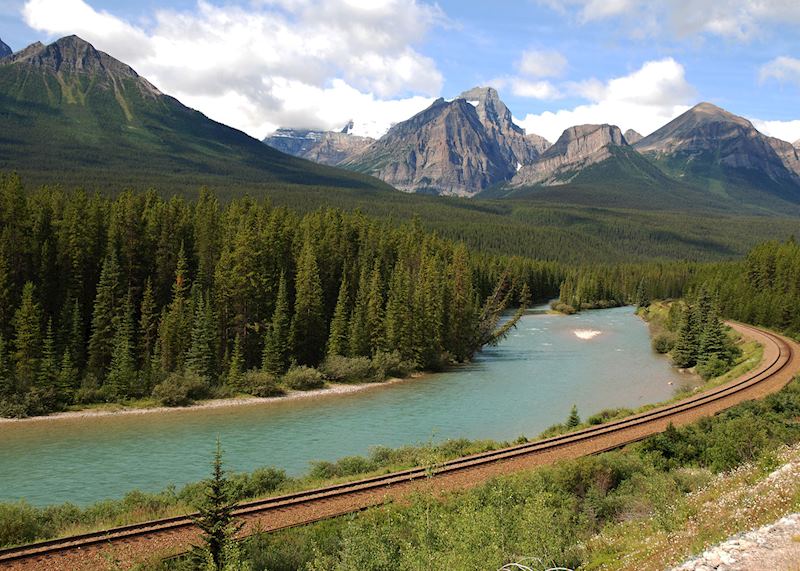
Location for: The Revenant (winner of three Oscars in 2016)
Frothing, turbulent rivers; stark, snow-covered valleys; and dark fir forests: The Revenant is set against a backdrop evocative of the harsh winters and unforgiving landscapes faced by 19th-century fur trappers.
Despite being set in Montana’s Rocky Mountains, much of the film was shot over the border in Canada. Location scouts picked Alberta’s Bow Valley and Kananaskis Country between Calgary and Banff (the same backdrop used in the 2005 Oscar-winning film, Brokeback Mountain).
Your visit doesn’t have to be as bleak as the events in the film (which saw Leonardo DiCaprio’s character being mauled by a grizzly bear). Instead, you can go hiking, mountain biking and white-water rafting on a self-drive trip through the Canadian Rockies.
We recommend following the Bow Valley Parkway (Highway 1A), a heritage drive between Lake Louise and Banff. Interpretive signs along the route tell you about the area’s history, geology and wildlife. Pause to hike in Johnston Canyon, taking in the Upper and Lower Falls.
Farther east, you can drive another section of Highway 1A, the Bow Valley Trail, located between the towns of Canmore and Cochrane. This road also runs parallel to the Bow River, passing lakes that glow turquoise in summer but freeze over in winter, as well as mountains such as Mount Yamnuska (‘wall of stone’).
You’ll also pass through the Stoney First Nations Reserve, which is where the production team constructed the wooden ‘fort’ that acted as a base for the film’s characters.
North Island, New Zealand
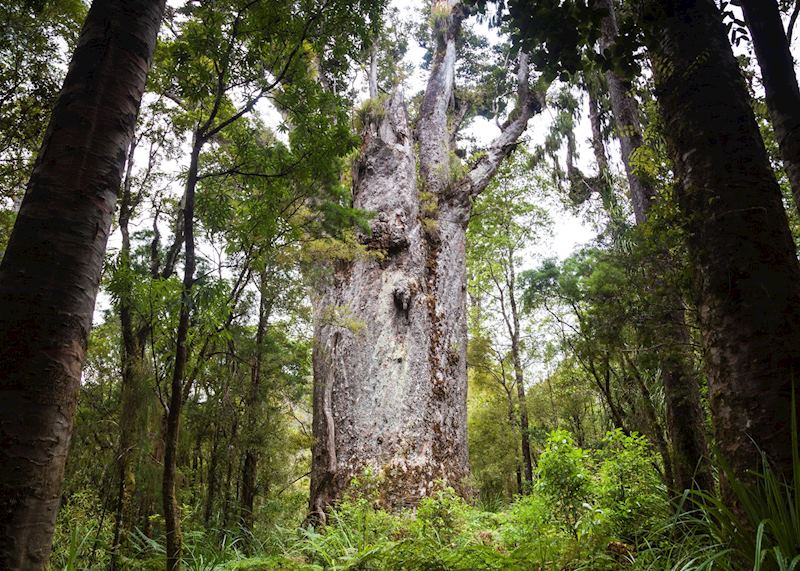
Location for: Whale Rider (nominated for one Oscar in 2004)
A small community on the eastern cape of New Zealand’s North Island is the setting for this gentle yet thought-provoking film about a Māori girl, Pai, who’s struggling to prove herself.
Although New Zealand’s arresting range of landscapes have become its calling card, they take a backseat here. Instead, the spotlight is on the country’s Māori people, their deeply held traditions, and the complex interplay of such traditions with modern life.
The film showcases many different aspects to Māori culture, from the art of taiaha (stick-fighting) to haka performances and chanting. Then there are the less tangible aspects: the question of gender roles, the importance of one’s ancestors, and the rich vein of mythology and spirituality that runs through everyday life.
You can dip your toe into all of this through a range of Māori-guided tours that allow you to experience Māori culture in an authentic, intimate, and respectful way.
For example, you might like to walk through Waipoua Forest at twilight with a Māori guide who’ll sing prayers to the sacred kauri trees as she introduces you to the forest’s ecosystem. Or, paddle a waka (as seen in Whale Rider) on Lake Rotorua alongside expert instructors. For something a little less energetic, you could take a backstage tour of the Māori archives at Te Papa Tongarewa, New Zealand’s National Museum, to examine weaponry similar to that featured in the film.
You can learn more about all these experiences in our guide to seeing New Zealand through Māori eyes.
Beijing, China
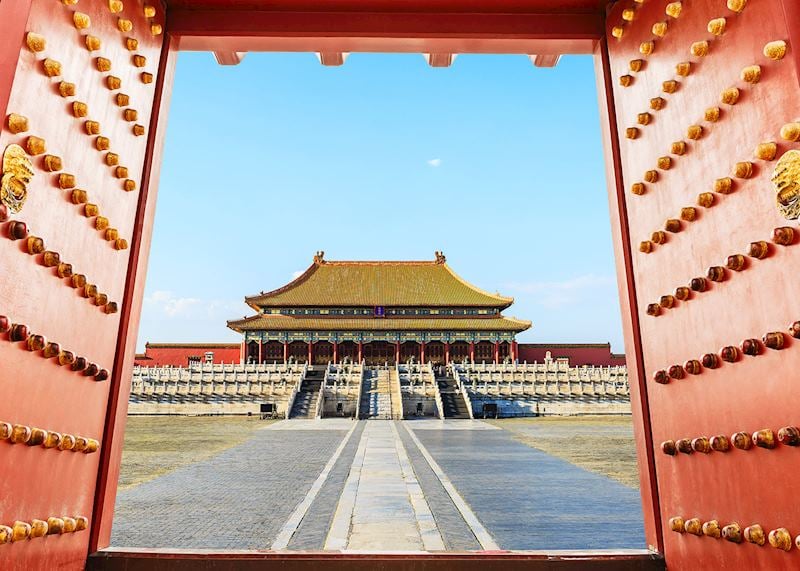
Location for: The Last Emperor (winner of nine Oscars in 1988)
Cavernous courtyards filled with row upon row of kowtowing courtiers. A boat floating through a lilypad-strewn pond carrying women adorned in imperial finery. The long, lonely walk of the evicted emperor through the immense red-walled gates of the Forbidden City. Yes, this palace complex — the largest in the world — is one of the headline stars of The Last Emperor, whose Oscar-winning cinematography presents it with aplomb.
Visiting the Forbidden City today, you can walk around the same courtyards, vast halls and marble terraces that you’ll see in the film (although unfortunately, unlike His Majesty, we can’t arrange for you to be transported everywhere by palanquin). You can see the restored Hall of Supreme Harmony (where, in the film, a young, confused toddler, Puyi, is crowned emperor in turn-of-the-century China) and look upon the Dragon Throne.
Your guide will adeptly lead you around the complex’s main sights and show you its less expected quirks, such as an 18th-century clepsydra (water clock) and an opera house. The costumes displayed here recall some of the lavish creations seen in the film. Try, if you can, to see the Palace of Gathered Elegance, to the west of the complex, which exhibits photographs of Puyi himself.
If you’re considering a trip, know that previously closed sections of the Forbidden City are due to open to the public for the first time in 2020.
Elsewhere in the film, you’ll see flashes of the hutongs — Beijing’s maze-like grids of tightly packed laneway housing, and a world away from the rarefied realm of the palace.
Was this useful?


